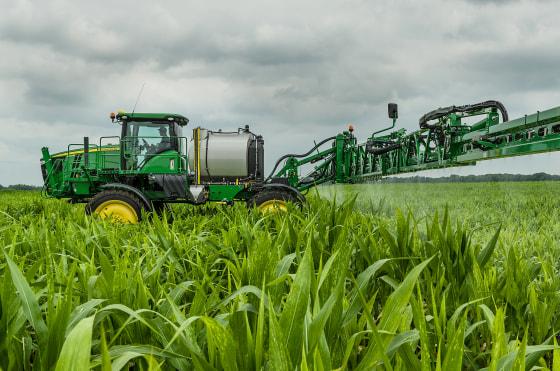Agriculture’s technological evolution takes a significant leap forward as John Deere’s autonomous tractors enter commercial fields across America. These self-driving machines, equipped wiht elegant sensors and GPS guidance systems, represent a fundamental shift in how farming operations are conducted.as labor shortages continue to challenge the agricultural sector, Deere’s autonomous technology offers farmers a solution that combines precision agriculture with reduced dependency on manual operators. This progress marks a pivotal moment in farming automation, raising questions about the future of agricultural employment and the role of human workers in modern farming. John Deere’s autonomous farming technology is transforming agricultural labor dynamics across global markets. The integration of self-driving systems in tractors and other farming equipment represents a significant shift in how agricultural operations are managed and executed.
These autonomous solutions enable farmers to operate equipment remotely through mobile devices, allowing them to oversee multiple machines simultaneously while focusing on other critical tasks. The technology utilizes advanced GPS guidance, computer vision, and artificial intelligence to navigate fields with precision, reducing the need for manual operation.
The impact on farm labor is multifaceted. While conventional tractor operator positions may decrease, new roles are emerging in technology maintainance, data analysis, and system optimization. Farmers are now required to develop digital literacy skills to effectively manage these autonomous systems, leading to a evolution in agricultural workforce requirements.
Rural communities are experiencing changes as the skill sets needed in modern farming operations shift. Technical training programs and agricultural education curricula are adapting to include robotics, computer programming, and data management components.This transformation is creating opportunities for younger generations to enter farming with a focus on technology implementation and oversight.
The economic implications are substantial. Initial investments in autonomous equipment are significant, but labor cost savings and increased efficiency can provide long-term returns. Farms can operate for longer hours with greater precision, optimizing resource usage and potentially increasing yields.
Safety improvements are notable, as autonomous systems reduce human exposure to hazardous conditions and minimize fatigue-related accidents. The technology includes advanced obstacle detection and emergency stop features, ensuring operational safety even in complex field conditions.
Data collection capabilities of these autonomous systems provide valuable insights for decision-making. Farmers can analyze detailed data about soil conditions,crop health,and equipment performance,enabling more informed management strategies and resource allocation.
Environmental benefits emerge through precise application of inputs and reduced soil compaction. Self-driving equipment can maintain exact paths, minimize overlap, and optimize speed and power usage, contributing to sustainable farming practices.
The transition presents challenges for smaller farms with limited capital for technology investment. Industry stakeholders are developing financing solutions and scaling options to make autonomous technology more accessible across different farm sizes.
Labor unions and agricultural workers’ organizations are adjusting to this technological shift, advocating for training programs and transition support for affected workers. The evolution of farm labor is creating a hybrid workforce where traditional agricultural knowledge combines with technical expertise.
As adoption increases, manufacturers are expanding support infrastructure, including remote diagnostics, software updates, and technical service networks. This development is creating additional employment opportunities in rural areas while ensuring reliable operation of autonomous systems.
The progression toward autonomous farming operations continues to reshape agricultural employment patterns, requiring adaptation from workers, employers, and educational institutions while promising enhanced productivity and sustainability in modern agriculture.


